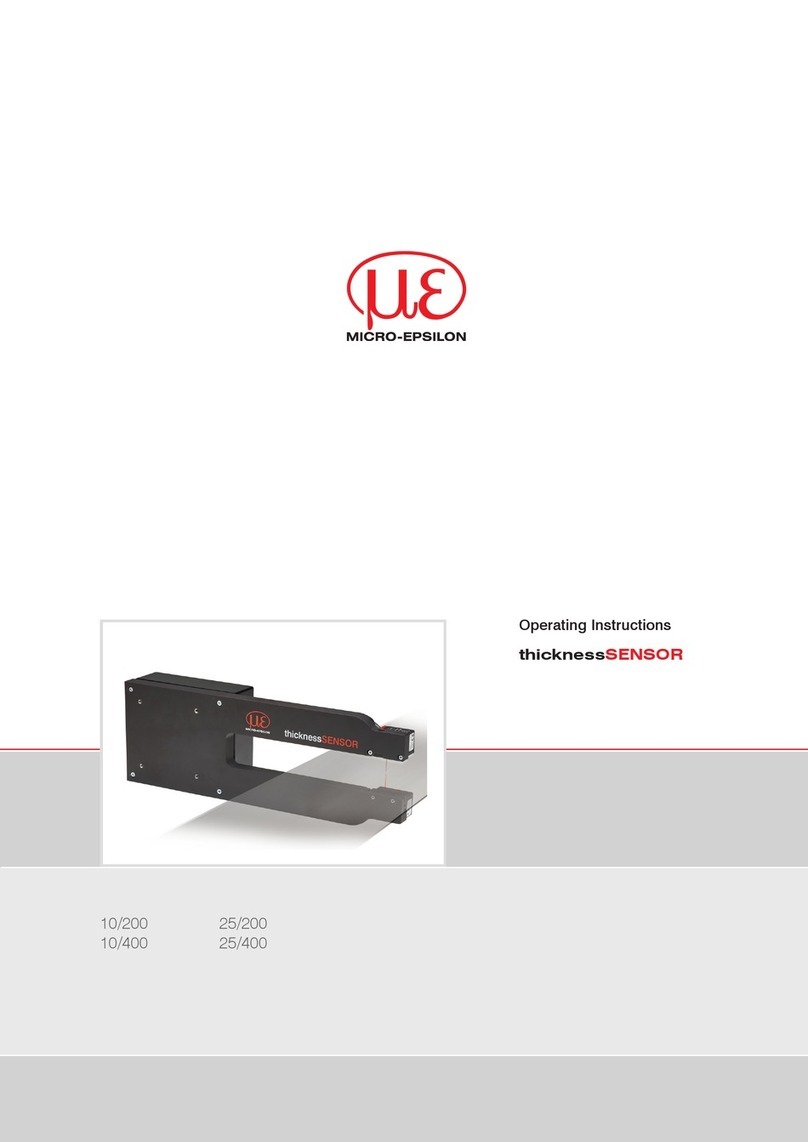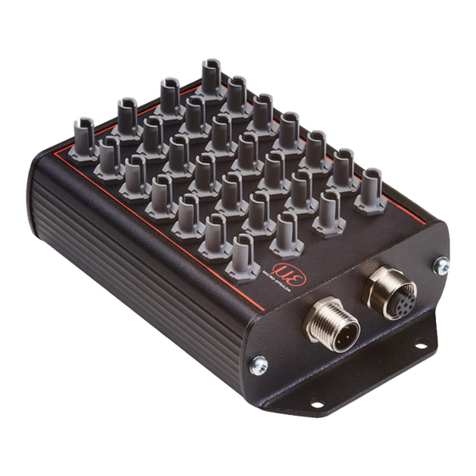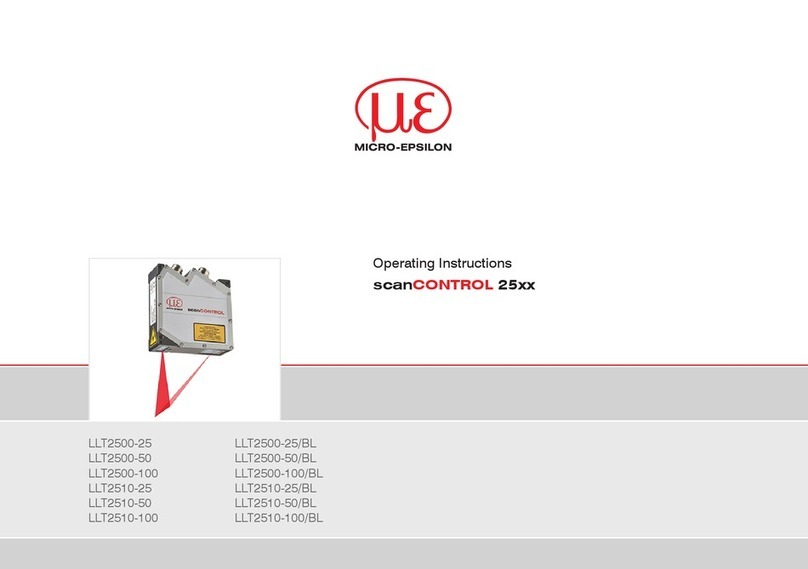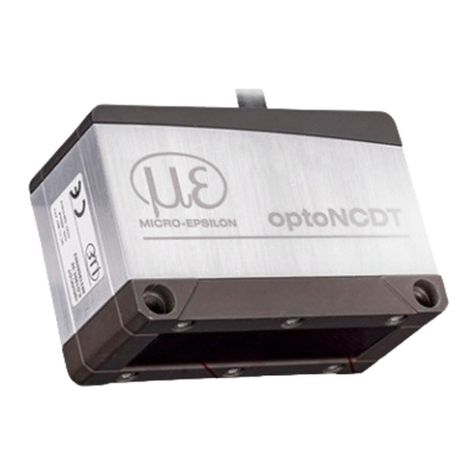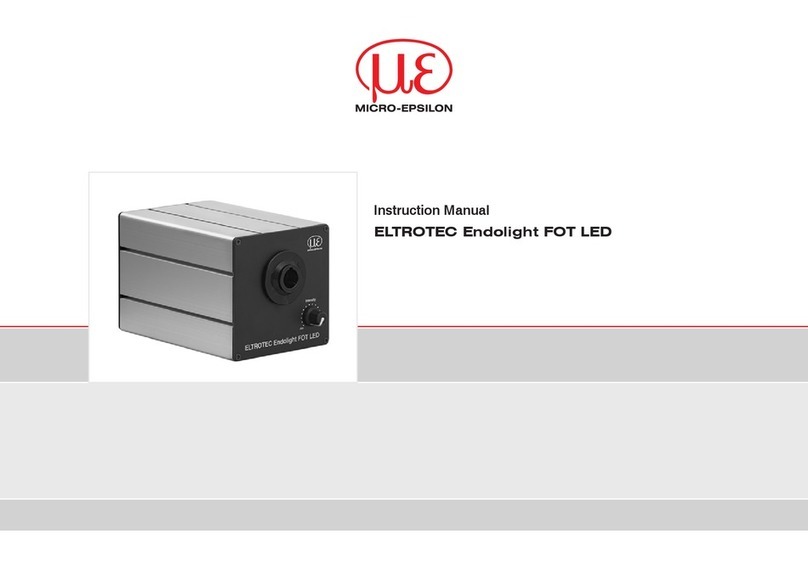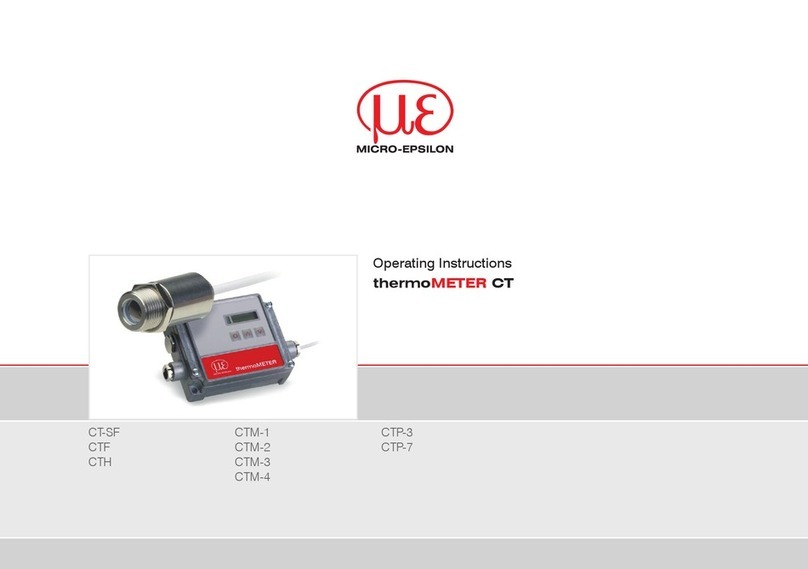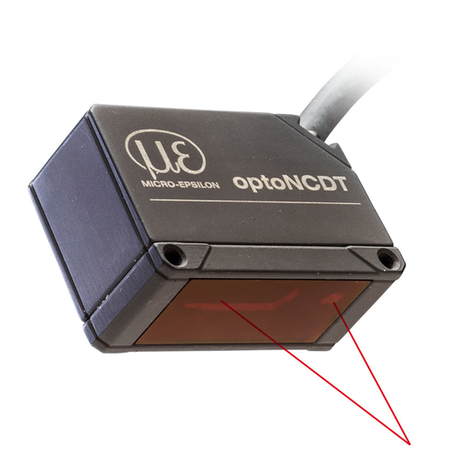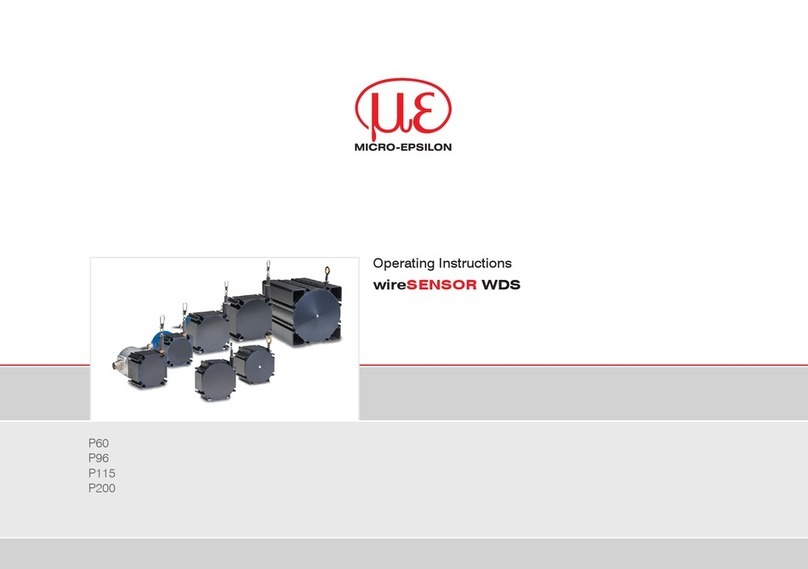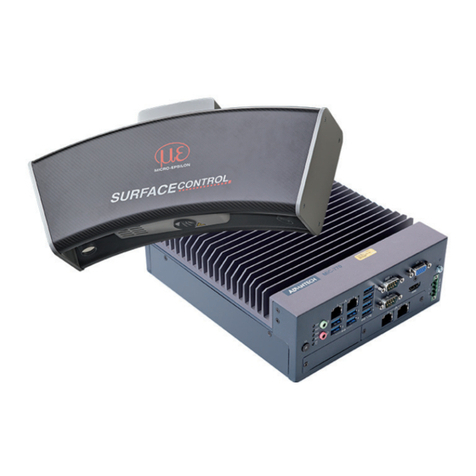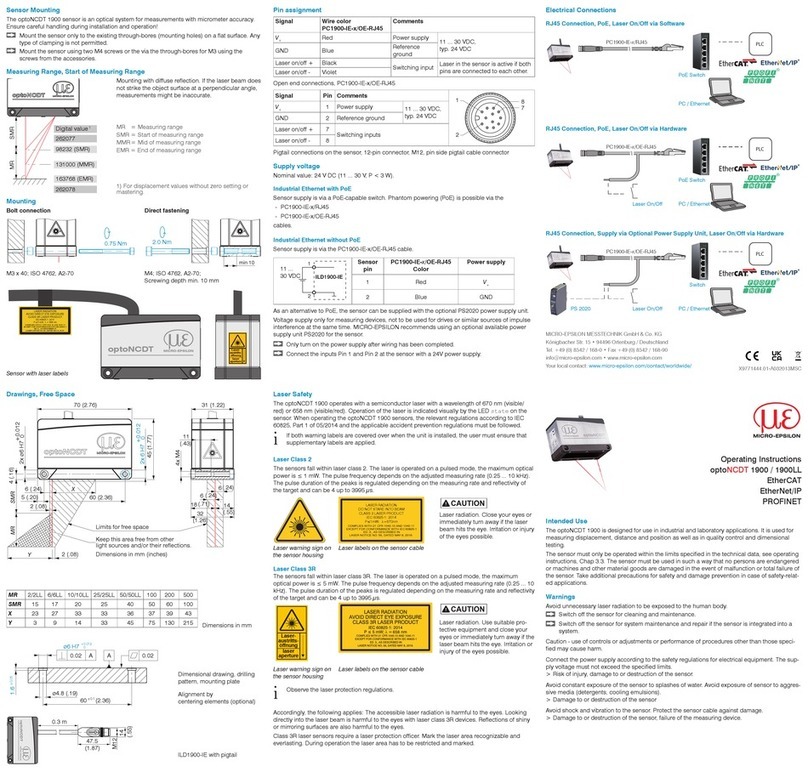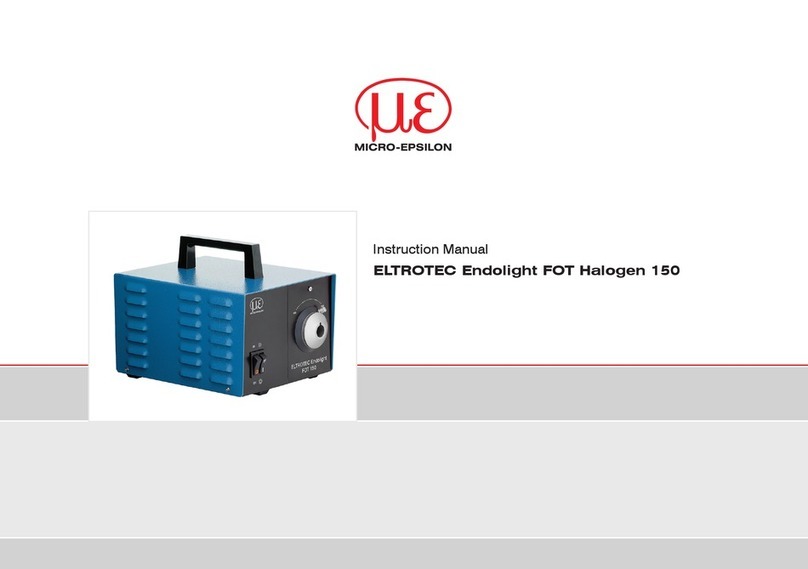
IMS5x00
A 3.3.4 Triggering...................................................................................................................................... 88
A 3.3.4.1 Select Trigger Source ............................................................................................... 88
A 3.3.4.2 Output of Triggered Values, With/Without Averaging.............................................. 88
A 3.3.4.3 Trigger Type .............................................................................................................. 88
A 3.3.4.4 Active Level Trigger Input ......................................................................................... 88
A 3.3.4.5 Software Trigger Pulse.............................................................................................. 88
A 3.3.4.6 Number of Output Measurement Values.................................................................. 88
A 3.3.4.7 Trigger Level TrigIn.................................................................................................... 88
A 3.3.4.8 Maximum Encoder Triggering .................................................................................. 89
A 3.3.4.9 Minimum Encoder Triggering ................................................................................... 89
A 3.3.4.10 Step Size Encoder Triggering................................................................................... 89
A 3.3.4.11 Example .................................................................................................................... 89
A 3.3.5 Encoder ........................................................................................................................................ 90
A 3.3.5.1 Encoder Interpolation Depth .................................................................................... 90
A 3.3.5.2 Effect of the Reference Track.................................................................................... 90
A 3.3.5.3 Encoder Value........................................................................................................... 90
A 3.3.5.4 Setting Encoder Value per Software......................................................................... 90
A 3.3.5.5 Reset the Detection of the First Marker Position ...................................................... 90
A 3.3.5.6 Maximimum Encoder Value...................................................................................... 90
A 3.3.5.7 Encoder3 On/Off....................................................................................................... 90
A 3.3.6 Interfaces ...................................................................................................................................... 91
A 3.3.6.1 Ethernet IP Settings .................................................................................................. 91
A 3.3.6.2 Setting for Ethernet Transmission of Measured Values ........................................... 91
A 3.3.6.3 Setting the RS422 Baud Rate ................................................................................... 91
A 3.3.6.4 Change Ethernet / EtherCAT .................................................................................... 91
A 3.3.6.5 Measurements per frame.......................................................................................... 91
A 3.3.6.6 TCP On/Off................................................................................................................ 91
A 3.3.7 Parameter Management, Load / Save Settings ........................................................................... 92
A 3.3.7.1 Safe / Load Connection Settings.............................................................................. 92
A 3.3.7.2 Show Changed Parameters..................................................................................... 92
A 3.3.7.3 Export of Parameter Sets to PC............................................................................... 92
A 3.3.7.4 Import of Parameter Sets from PC........................................................................... 92
A 3.3.7.5 Default Settings......................................................................................................... 92
A 3.3.7.6 Editing, Storing, Displaying, Deleting Measurement Settings ................................. 93
A 3.3.8 Measurement................................................................................................................................ 94
A 3.3.8.1 Measuring Rate......................................................................................................... 94
A 3.3.8.2 Masking the Evaluation Ranges ............................................................................... 94
A 3.3.8.3 Peak Detection Threshold ........................................................................................ 94
A 3.3.9 Material Data Base ...................................................................................................................... 95
A 3.3.9.1 Material Table ............................................................................................................ 95
A 3.3.9.2 Select Material........................................................................................................... 95
A 3.3.9.3 Display Material Properties....................................................................................... 95
A 3.3.9.4 Edit Material Table..................................................................................................... 95
A 3.3.9.5 Material ergänzen ..................................................................................................... 95
A 3.3.9.6 Determining the Material Composition of the Target................................................ 95
A 3.3.9.7 Defining a Medium in Front of the Target ................................................................. 96
A 3.3.9.8 Delete a Material ....................................................................................................... 96
A 3.3.9.9 Number of Peaks ...................................................................................................... 96
A 3.3.10 Measurement Value Processing................................................................................................... 96
A 3.3.10.1 List of Possible Displacement and Thickness Signals for Statistical Calculation... 96
A 3.3.10.2 Generate Statistic Signals......................................................................................... 96
A 3.3.10.3 List of Statistical Signals ........................................................................................... 96
A 3.3.10.4 Reset Statistical Calculation ..................................................................................... 96
A 3.3.10.5 Statistics Eample ...................................................................................................... 97
A 3.3.10.6 List of Signals which can be Parameterized............................................................. 98
A 3.3.10.7 Master Signal Parameterization................................................................................ 98
A 3.3.10.8 List of Possible Signals for Mastering....................................................................... 98
A 3.3.10.9 Masters / Zero ........................................................................................................... 98
A 3.3.10.10 Mastering Example ................................................................................................... 98
A 3.3.10.11 Channel Computation............................................................................................. 100
A 3.3.10.12 List of possible calculation signals ......................................................................... 100
A 3.3.11 Data Output ................................................................................................................................ 101
A 3.3.11.1 Selection of Digital Output...................................................................................... 101
A 3.3.11.2 Data Output Rate .................................................................................................... 101
A 3.3.11.3 Reduction Counter of Measurement Value Output ................................................ 101
A 3.3.11.4 Error Processing ..................................................................................................... 101
A 3.3.12 Select Measurement Values to be Output ................................................................................. 102
A 3.3.12.1 General.................................................................................................................... 102
A 3.3.12.2 Data Selection of Ethernet...................................................................................... 102
A 3.3.12.3 List of Possible Ethernet Signals ............................................................................ 102
A 3.3.12.4 List of Selected Signals, Transfer Sequence via Ethernet...................................... 102
A 3.3.13 Switching Outputs ...................................................................................................................... 103
A 3.3.13.1 Error Switching Outputs ......................................................................................... 103
A 3.3.13.2 Setting the Signal to be Evaluated ......................................................................... 103
A 3.3.13.3 List of Possible Signals for Error Output ................................................................ 103
A 3.3.13.4 Setting Limit Values................................................................................................. 103
A 3.3.13.5 Setting Value ........................................................................................................... 103
A 3.3.13.6 Switching Behavior for Error Outputs..................................................................... 103
A 3.3.14 Analog Output ............................................................................................................................ 104
A 3.3.14.1 Data Selection......................................................................................................... 104
A 3.3.14.2 List of Possible Signals for Analog Output............................................................. 104
A 3.3.14.3 Output Range.......................................................................................................... 104
A 3.3.14.4 Setting the Scaling of DAC ..................................................................................... 104
A 3.3.14.5 Setting the Scaling Range ...................................................................................... 104
